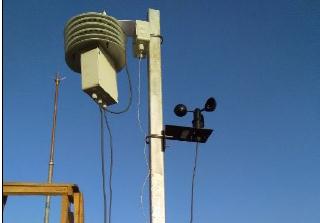The wind speed sensor comes in three different parts: sensor body, the anemometer cup wheel and an Allen key to mount the cup wheel on the sensor body. There are different ways to mount the sensor.
When selecting your mounting system, take into consideration that you will occasionally need to access the anemometer for preventive maintenance and possible component replacement.
The goal of installing a wind speed meter (anemometer) is to position it in a location where the wind flows freely and is not influenced by nearby objects.
Prepare the following tools
- Wire cutters and stripper
- Multimeter
- Electrical Tapes to cover the wire
- Wire ties and tabs
Use the following guidelines to determine the best location for mounting the module surface temperature sensor
Allow enough clearance for the wind sensor. Install the wind sensor away from buildings or any other objects that might affect the airflow
Try to make the anemometer the highest object around. 7 feet or more above the surrounding obstructions is best.
The anemometer must be mounted in an upright position; otherwise, water can enter the anemometer and destroy it.
Mounting
Observe the following requirements regarding the mounting location of the wind speed sensor:
Cups should be on the top of the sensor. Mount vertically.
Example installations:

Anemometer maintenance
- Anemometer maintenance includes inspection of mechanical operation and cleaning.
- Rotate vane assembly; look for smooth rotation and a gradual stop.
- Inspect mounting hardware for secure fasteners; mounting pipe must be vertical.
- Replace any loose or corroded fasteners.
- It is recommended to check the ball bearings of the anemometer and the vane every year. If the cup wheel or the vane is not rotating smoothly or it creates detectable noise, the bearings must be replaced.
- Clean any accumulation of dirt, dust, or bird droppings that may affect proper rotation of the vane. Use only soapy water and a soft cloth. Never use solvents or abrasive cleansers. Do not immerse the anemometer in water.
- Inspect the cable and connections.
